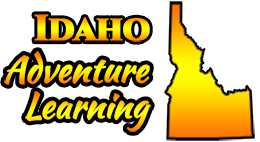My Connection to the Boise River WaterShed
Submitted by Allie Floyd on Mon, 2017-07-10 00:00
The question I am answering today is "how are you connected to the Boise River WaterShed?", and my answer is more broad. Since I have lived in Idaho my entire life, but most of it in the Boise area, I have had the Boise River around since I was a child. At one point we moved and the river was literally in my backyard! Since I learned to swim at the age of 2, I have been a water bug my entire life and have done many different activities in the Boise River such as tubing, rafting, kayaking, paddle boarding, swimming, or enjoying the sound of the water with just my feet dipped in from a beach side location. One of the first connections to the watershed that came to my mind is that we are lucky enough to have clean drinking water 24/7 that is supplied from the river. In addition to that, my family eats a lot of seafood and does a lot of fishing, so the population maintained by the Boise River and supported by the Boise River WaterShed is very important to me. More often than not, I think we take for granted what the river does for us in this community whether we are using it for the natural resources or for recreational purposes. We must find ways to be more observant and helpful when it comes to maintaining the habit within and around the river, as well as keeping it clean and unpolluted for not only ourselves, but the ecosystems that exist below the surface of the water.
This morning was a fantastic learning opportunity for me as I did not know much about ridgeways that feed into the river and I was able to learn much more about the sociology and ecological services that we have in this area. We completed a very fun, interactive activity that I would love to apply to my class when we get into the Weather & Water unit. First we crumpled a piece of paper and unfolded it slightly so it resembled a mountain. From there, we drew in basic items the pioneers may have had such as homes, markets, schools, lakes, and other recreation areas. After, we outlined the ridgeways and sprayed some water on the top to see if the buildings and those recreational areas were flooded, sustained with water, or too dried out. I am personally a very visual person so I loved this small scale activity and how the water spread through the surface. I'll attach my after picture, but I'll try to do some before pictures for activities like this throughout the week.
One last thing I have is to ask a question for all the digi-learners out there, so here it is... of all the ecological services we are fortunate enough to have provided to use in this area, which is THE most important to you (Ex: Food, clean water, clean air, photosynthesis, pollination, education, recreation, wood, cool temperatures, etc.) and why??
I am so looking forward to all the adventures this week has in store as well as getting the chance to talk with all the digital-learners out there!!! :) :)

Comments
Watershed influences
sistsoned Your post struck me as I too grew up around water and now have an appreciation for watersheds as a vital resource for a sustained community. That said, I grew up in horseshoe bend and was on the payette river nonstop during spring and summer and now greatly appreciate the memories I have from it.
I love Horseshoe Bend! My
I love Horseshoe Bend! My family owns some property up there, so we are there pretty frequently. Thanks for your response!
Great!
I love Horseshoe Bend! My family owns some property up there, so we are there pretty frequently. Thanks for your response!
WaterShed Connection
I love the crumpled paper activity you did! That is a perfect hands-on way to show students about ridgeways. I teach 8th grade ELA, so it's a bit more difficult to try to incorporate this into curriculum, but I was thinking it might be a good idea to do something like this in order to talk about sustainability during our argument unit when we look at different food production chains.
I would have to agree that water would be the most important ecological service to me. Of course they are all, for the most part, interconnected and are all important in their own ways... however I feel that water is the common factor in almost all of the ecological services. We need water for so many things - food production, clean drinking water, the growth of trees, recreation, cooler temperatures etc. It almost feels like if we make sure to conserve and protect our water supply, we take care of most of the current/potential problems facing many of the systems. Aside from this, I personally enjoy spending time in and around water, be it swimming, SUPing, rafting, or just sitting on the beach.
Thank you for your insights, Allie!
Thank you!
I loved the activity too! But as I said, I'm a very visual learner so I think many of my students would benefit from this too. I love your connection! One of my favorite things is cross-curriculum teaching so I am sure you can find a way to use or implement this activity! Do you read or study any Idaho history or historical events you could tie this into?
Great answer! We went round and round debating this yesterday, but generally agreed that they are all extremely important, but without water none of it would be possible without water as a main source. Even the bees that pollinate our products and plants need the water and the list goes on and on! I really love your answer though and you make some great points. Thank you for your response!